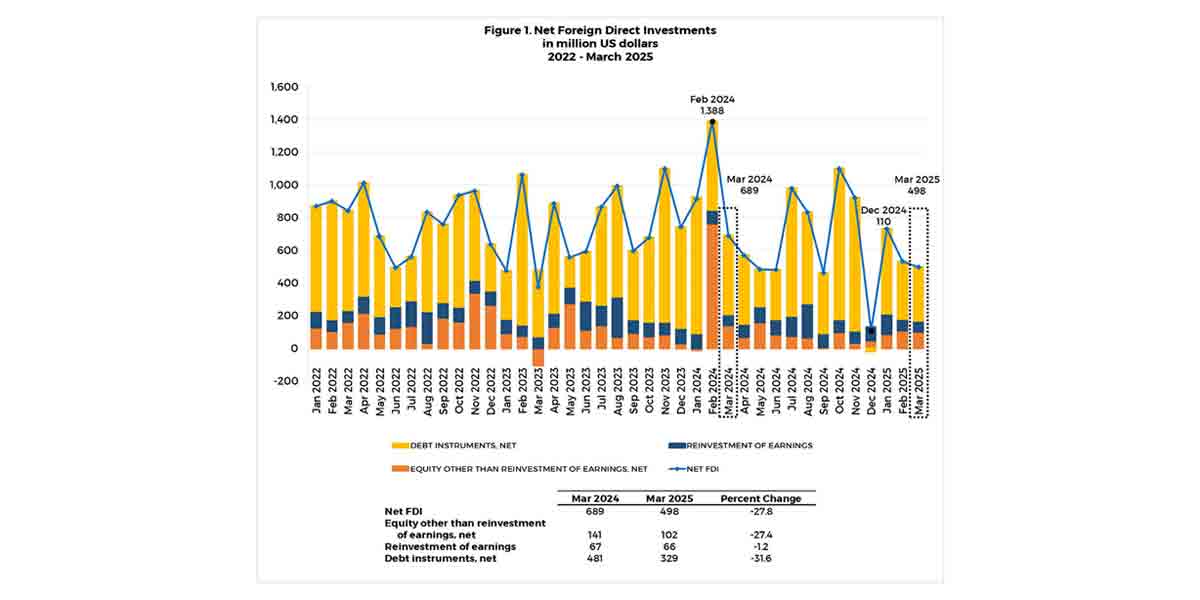
By Francis Allan L. Angelo
Inflation in Iloilo City increased to 3.3% in May 2025, positioning it as the 5th highest nationwide.
This is based on the analysis of data from the Philippine Statistics Authority (PSA) by Iloilo-based think tank Institute of Contemporary Economics (ICE).
Based on the analysis, Aklan and Antique recorded lower prices compared to last year, with inflation rates of -0.7% and -1.3% respectively.
Iloilo Province (excluding Iloilo City) and Capiz experienced a slowdown in annual inflation, with rates of 2.8% and 0.9% respectively. Guimaras saw a slight increase to 0.8%, considered largely benign.
Iloilo City’s annual inflation rose to 3.3% in May, up from 3.2% in April, ranking it fifth among regions nationwide with the highest inflation rates. This increase was primarily driven by higher costs in food, electricity, and rental.
Food prices in Iloilo City surged by 2.5%, the highest among Western Visayas localities, alongside a 10.2% spike in electricity and a 4.9% rise in actual housing rental.
Transport costs, however, saw some relief due to lower fuel prices, with gasoline down 13.3% and diesel down 12.4% compared to the previous year.
Conversely, Aklan (-0.7%) and Antique (-1.3%) continued to experience annual deflation for the second consecutive month.
Food and non-alcoholic beverage prices sharply declined in these provinces—3.6% in Aklan and 3.2% in Antique—while significant fuel price drops further eased transport costs.
Antique, notably, saw diesel and gasoline prices fall by 11.6% and 18% respectively.
Iloilo Province (excluding Iloilo City) registered 2.8% inflation in May, a continued decline from 3.2% in April and 4.2% in March.
Despite this slowdown, it remains ninth among the country’s regions with the highest inflation. Key drivers included rising housing costs, with actual rentals up 11.8%, and electricity prices up 7.6%, partially offset by a modest 1.4% rise in food and beverage prices.
Capiz followed a similar trend, with inflation cooling to 0.9% in May from 1.7% in April. Housing expenses slightly dipped by 0.4%, while food inflation rose to 2.0% and transport costs dropped significantly due to 11.5% and 15.5% declines in diesel and gasoline prices, respectively.
Guimaras posted a mild inflation rate of 0.8%, a modest rise for the second straight month. Food prices were down 1.8%, and fuel prices eased slightly, but the island province experienced housing inflation climbing to 3.7%, primarily due to a 14.2% jump in electricity rates.
Passenger transport costs also rose by 39%, contributing to an overall 1.2% increase in Guimaras’ transport inflation.
Overall, while the national inflation rate stood at 1.3% in May 2025, both Iloilo City (3.3%) and Iloilo Province (2.8%) remained in the Top 10 highest-inflation regions in the country.
The data reveals a complex economic landscape for Western Visayas, with urban centers like Iloilo City still facing inflationary pressures, while rural provinces like Aklan and Antique benefit from declining prices, particularly in essential commodities and transportation.
What Is Inflation and How Is It Measured?
Inflation is the rate at which the general level of prices for goods and services rises, eroding the purchasing power of money over time.
In the Philippines, the Philippine Statistics Authority (PSA) measures inflation by tracking price changes in a basket of commonly purchased items, such as food, fuel, housing, and transport.
This basket represents the typical spending of households and is used to calculate the Consumer Price Index (CPI).
The year-on-year inflation rate is then computed by comparing the CPI for a given month to the CPI from the same month the previous year.
For example, a 3.3% inflation rate in Iloilo City means that, on average, goods and services cost 3.3% more in May 2025 than they did in May 2024.
A positive inflation rate indicates rising prices, while a negative rate (deflation) signals a drop in prices.
Inflation helps policymakers and businesses make informed decisions on interest rates, wages, and investments, but consistently high inflation can harm households, especially those with fixed incomes.




















